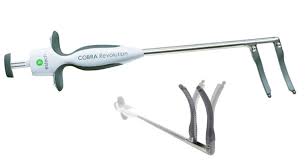Atrial Fibrillation Surgery
Atrial Fibrillation Surgery
Atrial fibrillation (AF or AFib) is the most common abnormal heart rhythm. Atrial fibrillation is an irregular, frequently rapid heart rhythm originating in the atria (top chambers of the heart). Instead of the normal situation (normal sinus rhythm) in which a single impulse travels in an orderly fashion through the heart, in AF many impulses begin simultaneously and spread through the atria, causing a rapid and disorganized heartbeat. .
At one time, atrial fibrillation was thought to be a harmless annoyance. However, atrial fibrillation is now recognized as a dangerous condition. Atrial fibrillation doubles the risk of death. It also increases the risk of stroke five to seven times compared to a person without atrial fibrillation. In addition, atrial fibrillation may cause congestive heart failure and uncomfortable symptoms related to a rapid heart rate. Learn more about atrial fibrillation (afib). Advances in ablation (both minimal invasive surgical and catheter) offer the possibility of cure to a large number of patients.
Reason for Surgery
The goals of treatment for atrial fibrillation include regaining a normal heart rhythm (sinus rhythm), controlling the heart rate, preventing blood clots and reducing the risk of stroke.
Medical Management of Atrial Fibrillation
Initially, medications are used to treat atrial fibrillation. Atrial fibrillation medications may include:
- Rhythm control medications (antiarrhythmic drugs)
- Rate control medications (to slow the heart rate)
- Coumadin (warfarin - an anticoagulant or blood thinner) to prevent blood clots and stroke
Surgical treatment for atrial fibrillation is considered when:
- Medical therapy does not effectively control or correct atrial fibrillation
- Medications for atrial fibrillation are not tolerated
- Anticoagulants (coumadin/warfarin) can not be taken
- Blood clots, including strokes, occur
Minimally invasive surgery is an option for many patients with atrial fibrillation. Surgical treatment for atrial fibrillation also may be considered when surgery is needed to treat a coexisting heart condition, such as valve or coronary artery disease.
When patients with AF have valve or bypass surgery, surgeons create a classic Maze lesion set on the heart using either radiofrequency energy or cryothermy. This generally adds 15 minutes to the operative procedure and does not increase operative risk. Sinus rhythm is restored in 75% to 85% of patients, depending upon patient characteristics.
Selected patients with valvular heart disease and atrial fibrillation may be candidates for a minimally invasive approach that enables treatment of both conditions.




